
It isn’t often that I am too excited to sleep. There has only been a handful of times; once when my mum was in hospital and the other being the night before I saw my dad, nan and grandad together for the first time in 5 years. However, on Thursday 15th of September, the night was constantly interrupted by sudden smiles beaming from one cob-web filled corner of the room to the daddy long-legs stronghold on the other. Little did I know, how big my first ever BSB media event would be.
Right on 5.57am, 23 minutes before my alarm would usually ring around my two-bedroom bungalow, which in turn is perched on the top of a hill in Mansfield, I enthusiastically jumped out of bed, jumped into my jogging bottoms, and took my dog out for a walk. Upon my return to my home, I encountered an alarming noise, which turned out to be my alarm. I was so eager to get out and get ready, that I totally forgot to turn my alarm off.
After my mum lectured me on how to turn alarms off, I packed my bag. It consisted of a geography exercise book, The Great Gatsby, an AQA Paris anthology but most of all, a weekend pass at Donington Park. Because as soon as Kev, my geography teacher, was to say “see you on Tuesday”, I would be leaving the 6th floor of my college and heading to the Broadmarsh Bus Station to catch my Skylink bus to the track that has hosted F1 and MotoGP races.
After analysing Tom Buchanan’s behaviour in The Great Gatsby and learning about neo-liberalism and how Margaret Thatcher introduced it to us Brits in the 80s, I headed for my bus. However, because I have the sense of direction of a pet hamster, I got lost. I looked on my phone, reluctantly started using up some data and found out where the bus station actually was, although I must say I pass it at least three times a week. I saw my bus, ran for it and lunged at the door and just got there in time. It was an earlier bus than I had originally planned to get. I ripped the ZigZag ticket from the machine, sat down, before watching the doors slowly closing. I was now on my way to a collection of some of the UK’s best motorcycle racers.
Half an hour later in the Nottinghamshire countryside, which I have to say is very beautiful indeed, I pressed the stop button. I was thrown forward by the sudden braking of the driver, as I didn’t realise at the time how close the bus already was to the stop. After surviving that ordeal, I turned my phone on and was overwhelmed by the amount of support I already had coming into the round.
I never actually realised how much of a walk it was into the circuit. I was greeted on entrance by a rather big man, who immediately asked me to wait as a mini bus would take us down. The mini bus arrived, I hopped on, hopped off two minutes later and was welcomed by a young lady, probably around 75, who wished me all the best.
I walked up the ‘tickets’ path. A lad with a Lee Jackson hat scanned my ticket and that was that. The beep signified that I was about to embark on the biggest day of my life so far. I was now into a world where the people I watched on TV, both today and when I was three or four, would be hanging around. I can only compare it to walking along Hollywood’s Walk of Fame. You just don’t know who or what you may see, but when you do see them, you will know who they are.
The first thing that hit me was the fact of how much BSB has changed. Not only did we now have the MSVR Hospitality, but every team had one too. Came BPT TTC team on the left, with the Buildbase BMW squad opposite. Arch rivals Tyco BMW adjacent to them, with Quattro Plant, PBM and JG Speedfit all lacing one side of the paddock.
The next thing I did was ring Tommy Hill. Thanks to a very good contact, Neil Simmons, I was able to ring the 2011 BSB championship winner, and ask him where he was. He answered and immediately I felt like putting the phone down and thinking “who the bloody hell do I think I am, ringing this absolute legend”. But, I didn’t. I said hello and told him where I was, and he said come straight in, garage 20 and 21. Rather baffled by the fact I’d just been invited in to join Tommy, I made my way to the garage – or, at least I thought I did.
I climbed some steps – only three or four – up to two doors. One with 20 on and the other with 21. I chose 21, with no particular reason, but I just walked straight in. But I can tell you, it most certainly wasn’t a garage with a Factory Yamaha R1 in it. In fact, it was a quiet, little room with about five people in it. I am, at this point, very, very confused. “Can I help” said a woman, who sounded like she had married a coal miner and swallowed a packet of 20 Lucky Strikes Suzukis for breakfast. I said I was looking for the ePayMe Yamaha pit garage, to which one gentleman replied, its down there, pointing to the Goddard’s Hairpin. I apologised but all in all, I probably brightened their day up (Big Ed).
I made myself back through the ‘pop-up pit lane’ as I like to call it. Where all the Superstock 1000, 600 and Motostar teams are based, as they run their teams out of tents. The smell of a 125cc 2-stroke got all my hairs standing on end – well, apart from my leg hairs, because I was wearing a pair of Burton Stretch Skinny Jeans, so they had little room. I wondered through the paddock. Charlie Nesbitt, Asher Durham and Liam Delves were all located in the area, but I decided to keep walking because I said to Tommy I wouldn’t be long.
Then, as I re-joined the big teams, I saw what would turn out to be, my new favourite rider. Filip Backlund, with his left leg crossed over his right leg whilst leaning up against the Quattro Plant Bournemouth Kawasaki Hospitality unit, was on his phone. I didn’t think he was playing Pokemon GO, but I didn’t want to interrupt him. I was going to get an interview with him anyway.
So after much drama, I finally reached the Tommy Hill Motorsport ePayMe Yamaha Team garage and I walked straight in. I asked Harry, one of the crew, if Tommy was in, and expectedly he asked who is it. I told him my name and he took me round and there he was. Tommy Hill. THE Tommy Hill. 2011 BSB Champion Tommy Hill. A million things were going on in my head but I shook his hand and we got down to business (he promised me an interview).
After the interview, which you can read about on the British Superbike page, he said, “make yourself at home, put your bag down, get a drink, take photos of the bikes and wonder the pit-lane in front of his garage. I was absolutely stunned at how outgoing he was. He didn’t have any snobbery about him, which I didn’t expect anyway, but he was a normal person. He made me feel not so much special, but chilled. It was like meeting someone in the pub and having a good old chat with them. He said to comeback after FP2 to get my John Hopkins interview, but I missed him so Tommy said come back for FP3 and watch some practice with them. Honoured doesn’t even begin to describe just how I was feeling.
On my way out of the garage exit on the paddock side, I turned right and walked past all the skyscraper-like trucks and motorhomes. As I got to the Tyco BMW lorry, I was taken back by a tall, ominous six-foot figure, who began with I and ended in an Hutchinson. My hero. Someone who I have so much respect for, especially after his comeback from injury, was less than 5m away. I couldn’t quite understand that it was him; the same person who has been around the Isle of Man TT Course and won 14 times was in my sight. I got a shiver down my spine and decided that I would just walk on by. I did manage a selfie with him the following day, and I really couldn’t believe that I’d met a legend like Hutchy.
I went out of the gate, walked down to my bus stop, jumped on the bus and immediately rung my mum and told her how good it was. She was cooking so I told her I’ll tell her when I’m back. I then rung my dad, and he couldn’t believe that I got the interview! The last thing I said to him was “It won’t get any better than this… …little did I know.
Saturday
Saturday dawned and immediately I was straight to work. Myself, Tommy, Tony and Harry, along with a bald mechanic I don’t know the name of and a couple of other special guests watched on pensively as John Hopkins tore around the Nottinghamshire/Leicestershire track. He posted a time at the end of the session which broke the old lap record on a BSB bike, which was ironically held by Tommy Hill himself. Hopper returned to the pits and was greeted with whistles and applause as finally Tommy had some luck and this time, it was good.
Tommy approached me and said whenever you’ve got a minute, go over to him and do an interview. I looked at John, and the former GP star waved his hand as if to say come on over. So I did, and I plonked myself down on the chair besides him. I was now interviewing someone who had ridden everything with two wheels and been on pole in MotoGP races. No biggy.
After that, I told Tommy I was going to hunt for a few riders around the paddock, but most of them had escaped, so I decided to head back to the former Virgin R6 Cup Champion’s garage. Hill came up to me and said, “What do you want to do as a career then”? I said I wanted to be a motorcycle racing commentator, no matter on what level that may be. “Come on then, we will go and see Fred Clarke and I’ll introduce him to you”. Shocked doesn’t cover it. I didn’t know what to say. Kid in a candy shop would also be an understatement. I’d met many people but never someone who was doing the job I could only dream.
I spoke to Fred, and he made a note of who I write for and gave us all a big shout-out over the circuit microphones. After I bounced somewhat joyfully down the stairs back to the paddock, I decided I was hungry enough to pay a whopping £9.50 for a burger and chips.
As I choked to death on a sliced onion that had got lodged somewhere it wasn’t meant to be, I saw one of my favourite riders. James Rispoli was walking around the paddock, on his way to something that was probably a PR stunt or something like that. I walked over to him and just outside the PBM Hospitality unit, I introduced myself. “James, Kiko here, remember I sent you an interview ages ago?” He was a bit shocked and probably annoyed that I’d stopped him and wanted an interview, but anyway, I got him and he answered my questions. You can read the answers over on the British Superbikes page sometime soon.
The night before, I messaged Quattro Plant Kawasaki Team owner Pete Extance to ask if he had time to do a quick interview. He said yes no problem, come and find me in the hospitality unit. So, at around 2.30, I did what he told me to do, and found him. I shook his hand and he said that he’s more than willing to do it. The interview will also be on the BSB page very soon. I can honestly say he is one of the most honest and kindest lads in the paddock, and a very, very good source of information.
Next up was qualifying, and yet again I was catered for in the ePayMe Yamaha garage. And it was here that I realised the drama of motorcycle racing. Hopper had got through into Q2, and everyone was fairly joyous. However, on his first flying lap, he tucked the front at Redgate, leaving the bike to do nothing but bounce through the Donington Park beach at turn one. A huge “For fuck sake John” bellowed from the mouth of team owner Hill. The team knew that this job would take a long time to put right. I was located in between the two sides of the garage, and on his way out, Tommy rolled his eyes as if to say, ‘he’s done it again’. John was perfectly OK but understandably annoyed. He walked off disconsolately and went off to give himself a clean down. I wished him all the best for Sunday’s races.
I left the pits in pursuit of someone who I only just missed the day before. Super Swede Filip Backlund had dodged me once, and it wasn’t going to happen again. I rung him twice, no answer. I text him, no answer or reply. I went to the Quattro Plant hospitality unit, no sign of him. I finally ended up in the back of his garage, with the team’s “tyre man” saying that Filip had gone home, as he lives local. I was determined not to give up, and on one last search I went around the paddock but still, there was no sign of him. Where could he have gone? Then, out of nowhere, a Quattro Plant Kawasaki figure dashed across me. All I know is that it wasn’t Backlund. And it most certainly wasn’t his Italian or Spanish cousin either. It was someone who looked a bit official for the team. I asked where Backlund was and he said he’d only just left, as he was in a rush to get his train. I had something of a mini stroke when he said that. However, all hope hadn’t been dashed, as the official looking man said, “hang on, that’s him up there I think, run and you may catch him”. Now, to clarify, I didn’t run (insert your own jokes here). However, he was right, it was Backlund! I’d found him. “Hey Kiko, sorry I’ve kept you hanging on”, he said, before I could even introduce myself! He probably recognised me from my Twitter photo. We had a good chat before we got to the hospitality unit. He got me a drink and that was that! You can read that interview on the BSB page too!
I left as a very happy man indeed, until I realised the time. I got wrapped up in such a great conversation with the 26-year-old that I lost track of time and now had to rush for my bus. I was really pushing my luck. I decided that whilst the security wasn’t looking, I’d run across the ‘out of bounds’ car park and climb over the fence at the other side, as it would save me vital minutes. At the halfway mark, I noticed this big blue bus approach the road that I was on, and I still wasn’t near the bus stop. I decided to go for it. I sprinted, and I mean, sprinted for the bus stop. I didn’t have time to think, but I attempted to hurdle the wooden fence that was probably about 3ft high. My feet got caught and I was heading straight into the road. I kept my balance and despite the good old “you wanker” and “Jesus Christ”, I got back on the pavement and started my sprint again! I put my hand out just before the bus stop and luckily, the bus stopped for me. I was very, very lucky! Anyway, on to Sunday, the day they say is hardest to get anything out of anyone.
Sunday
I arrived in Nottingham slightly earlier than I expected. I was begging for something to eat and saw a Greggs that was open. I dived into Greggs quicker than Jeremy Corbyn dived on anything that was privatised, and stuffed my bacon and sausage roll in my coat pocket whilst I consumed my very Hot Chocolate. I walked around to the train station and that’s when I saw someone who I had never met before but had been so pivotal in my articles. Gareth Davies, our incredible photographer of most the BSB rounds was there, parked up, waiting for me to jump in so we could get to Donington.
After shaking his hand, we immediately got talking about all forms of bike racing. I was already on the rev limiter about how good BSB is and how much better it is than WSBK. Sorry to deafen you Gareth.
We then got to the track, met up with a couple of customers, got our stuff and headed for the paddock area once more. We popped in to see Tommy Hill, who signed the DVD we will be giving away shortly! We then went down to the far end of the pit lane, where I spotted Ben Currie. I got a few words with him, which you will be able to read in the coming days. Then, we shouted Bradley Ray, who I also spoke to. By now, I was in full Suzi Perry mode, darting from rider to rider and actually talking about each one as if I was on TV. Then I grabbed three time BSB champion Neil Mackenzie’s son Tarran, who rides for the Team WD40 outfit. Within five minutes, I had got three big and up and coming names.
The next task was to find someone who I mutually know. A friend of mine, Nic Taylor, is very good friends with TT legend Steve Plater. Plater is another rider I particularly admire, for riding like a lunatic (good thing) and creating a great spectacle for us road racing fans, as well as being one of the most successful riders of all time in many disciplines.
We found Plater, so I got straight down to business and got an interview with him. I asked him a question which I never really expected to ever ask him. His response was blank. He didn’t know what to say. For a good 15 seconds, Plater was silent. He gave me an answer in the end but after, he said, “That’s a good question is that, I’ve never had to answer that”. I walked away smiling my face off as I had just bagged myself one of the best interviews yet.
We wondered around before watching race one. The atmosphere was biblical, especially at the Foggy Esses. Shakey ended up clearing off at the front, so it wasn’t as exciting as we hoped. But the sun was shining, and that was the big positive. I’m not here to describe the race anyway; I’m here to enlighten you on my experience over the weekend.
Just before the race, I caught Martin Halsall, who I was desperate to speak to. He said come back after race one as he was on the way to the loo, so he didn’t want to “have an accident, the team have had enough this year already”. So, seeing as race one was done already, I found him just coming out of the Halsall Racing truck. I jumped the queue in terms of other media people waiting, but if I’m honest, I don’t particularly interview the bosses to please other media outlets. Martin was smiling away as usual and was a great laugh! I was very, very pushy and in the end, even Gareth was laughing as I chased an answer. I hope that Martin will remember me.
We went around the Moto3 paddock and the Stock 600s, where we found Charlie Nesbitt, the new Motostar champion. After a few words with him, we moved on and race two was up next. Me and Gareth went back to the Foggy Esses and enjoyed the final big race of our day.
The crowd went crazy for Byrne when he hit the front but they also groaned when Leon Haslam crashed at the first corner. This left Byrne with a big advantage, which meant he did the double in magnificent style. He did a beautiful burnout in front of his mass following, before mono-wheeling down to the Melbourne Loop.
I decided I was hungry (again), and went to the not very cheap, cheaper burger stand, where this time, I only paid £4.90, although it was the burger alone. As I scoffed it, I saw Taylor Mackenzie, who had wrapped up the Superstock 1000 title just a few hours previous. I said to him well done, shook his hand and walked off.
Then, my new best friend in the paddock Filip Backlund, was outside the hospitality unit I had interviewed him in just 24 hours previous. I waited for him to finish talking to a friend, and then he realised who I was. “Ahhhh Kiko! Nice to see you my friend”. I replied instantaneously with, “Filip, I’m sorry I’ve given you so much bad luck”. He said, “Never mind, but just never come to a BSB event again” (humorously). I was already thinking of a comeback! We were shaking hands and just before the photo was taken, I said “It’s OK, I’ve done a deal with Pete Extance, I’m going to replace him next season because he keeps crashing”! He replied with, “I’m sure Pete would love that, it saves him money”. The banter was in full flow but sadly, it was time to say so long to the incredible Filip Backlund, who was far more outgoing than I ever imagined!
As we walked up to the ePayMe Yamaha team where I had been the guest of honour, I made an alarming observation. The PBM Ducati team were all very jovial and celebrating an incredible Shakey double win, which put the Londoner back on top of the standings. Just next door, JG Speedfit GBMoto Kawasaki squad were packing up and going home. It highlighted the two extremes of the sport we all so dearly love: the sweet taste of champagne at the top, contrasting to the bitter taste of disappointment and ‘ifs, buts and maybes’ at the bottom. And believe me, you have to be there to see it.
We got back into the ePayMe Yamaha garage where they were also suffering from yet another unlucky weekend. Tommy explained what had happened during the race, before I packed my bag and unplugged my phone from the socket they let me use. On my way out, I shook Hill’s hand and said a very resounding “Thank you, it’s been very special”. Hill responded with something along the lines of ‘no worries, it’s been an honour having you, I hope to see you again’.
My first ever media weekend was complete and I’d done it all without a media pass. For people like me, it can be the start of something bigger.
I got out of Gareth’s car, shook his hand and thanked him for all the support. The car door shutting marked the end of my first weekend working in BSB, doing myself and the Pit Crew proud! And with that, I was on the 7.10 Pronto bus back to Mansfield before getting the number 1 service to Woodhouse High Street. I walked for ten minutes with Delta Goodrem’s “In the Name of Love” blasting away before switching to Catfish and the Bottlemen’s “Red”. They will be the soundtrack of the most amazing weekend of my life.
I got to the back door of the same two-bedroom house I started off in on Friday, greeted my mum before being dived upon by my dog, Sugo (named after the Japanese race track). And with that, the weekend was over. My BSB experience can only be summed up with one phrase:
I made my debut in my natural habitat!
Thanks to Gareth Davies for the image!
Kiko Giles @MotoGPKiko







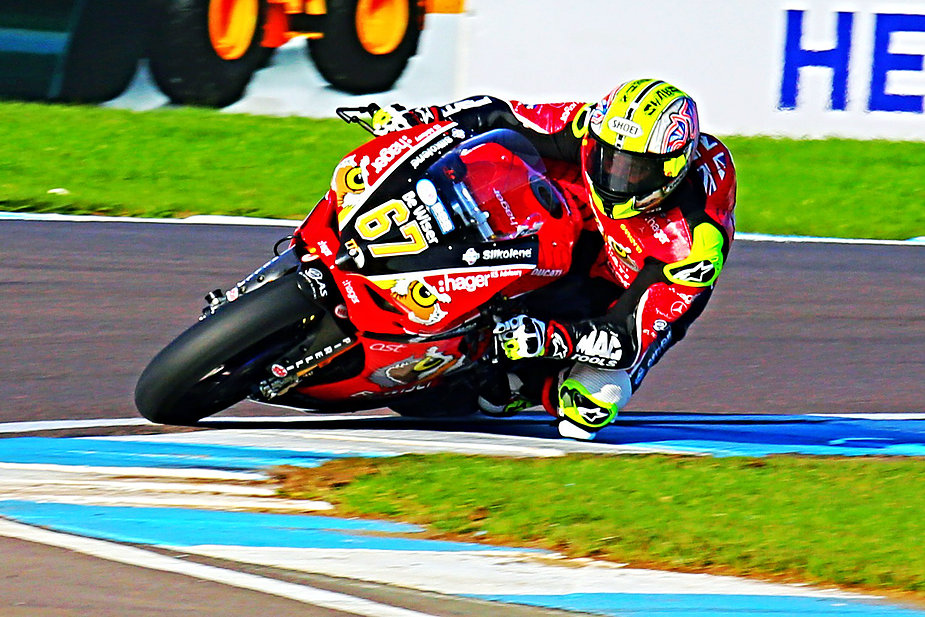
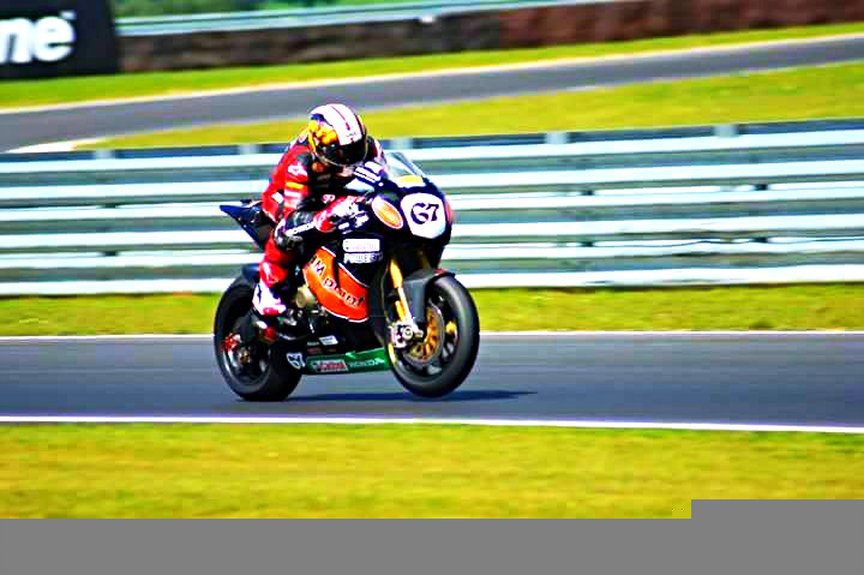

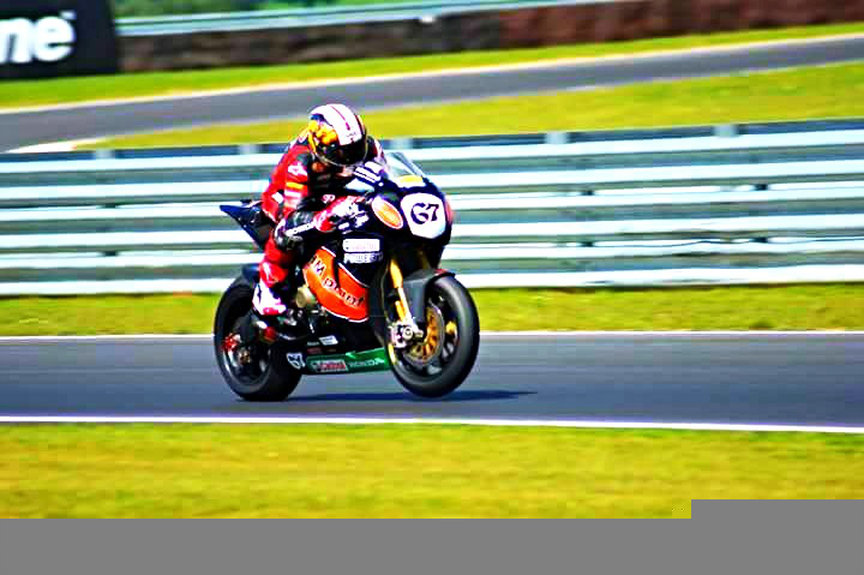
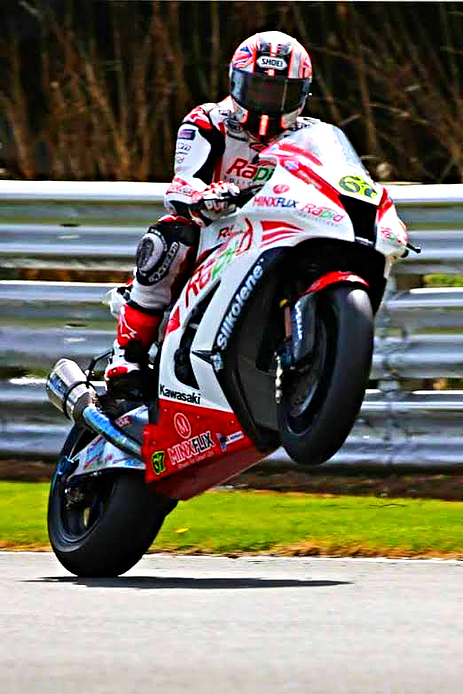
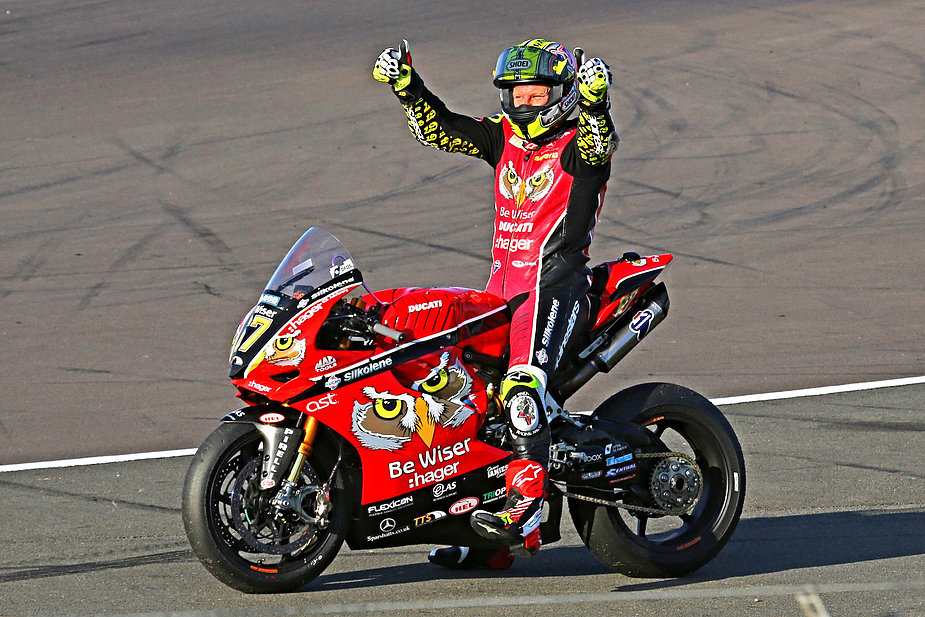



 It is a paradox that a man who hails from a country which has banned racing for decades should go on to become a revered name in motorsport. However, it is perhaps in fitting with who this man is at heart; a pioneer, a courageous visionary with an innovative spirit that, still today, permeates the history of Formula 1. That man is of course, Peter Sauber.
It is a paradox that a man who hails from a country which has banned racing for decades should go on to become a revered name in motorsport. However, it is perhaps in fitting with who this man is at heart; a pioneer, a courageous visionary with an innovative spirit that, still today, permeates the history of Formula 1. That man is of course, Peter Sauber. I am certain however that Peter would be the very first to say that this is nothing to be sad about, history has again been made, with Peter Sauber again at the forefront of it.
I am certain however that Peter would be the very first to say that this is nothing to be sad about, history has again been made, with Peter Sauber again at the forefront of it.